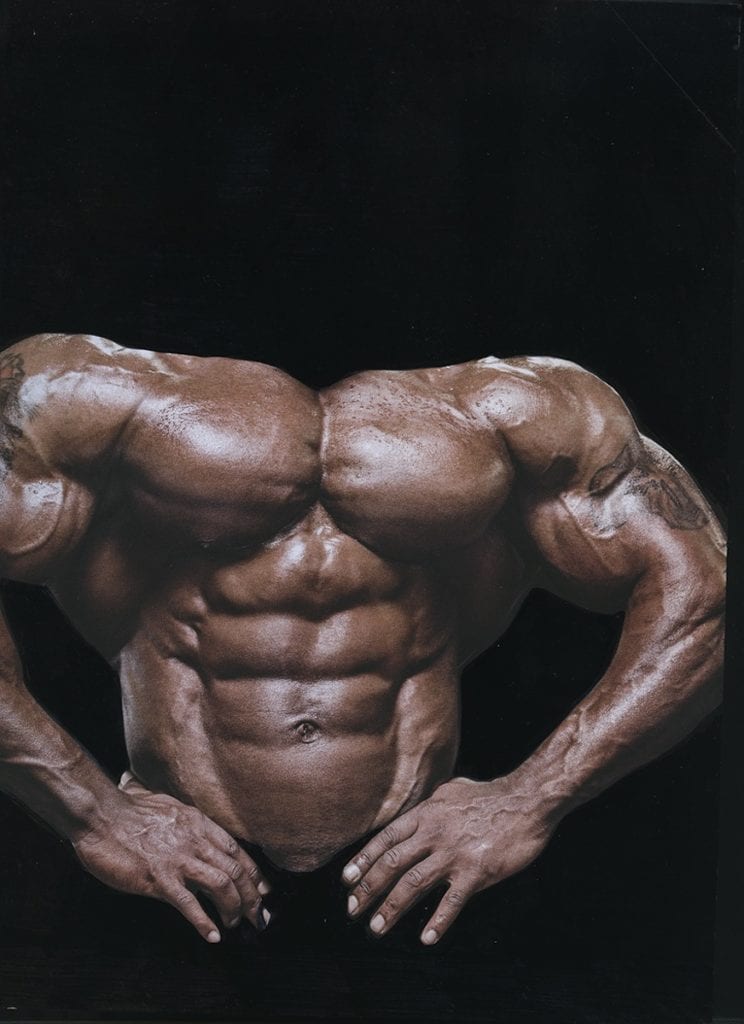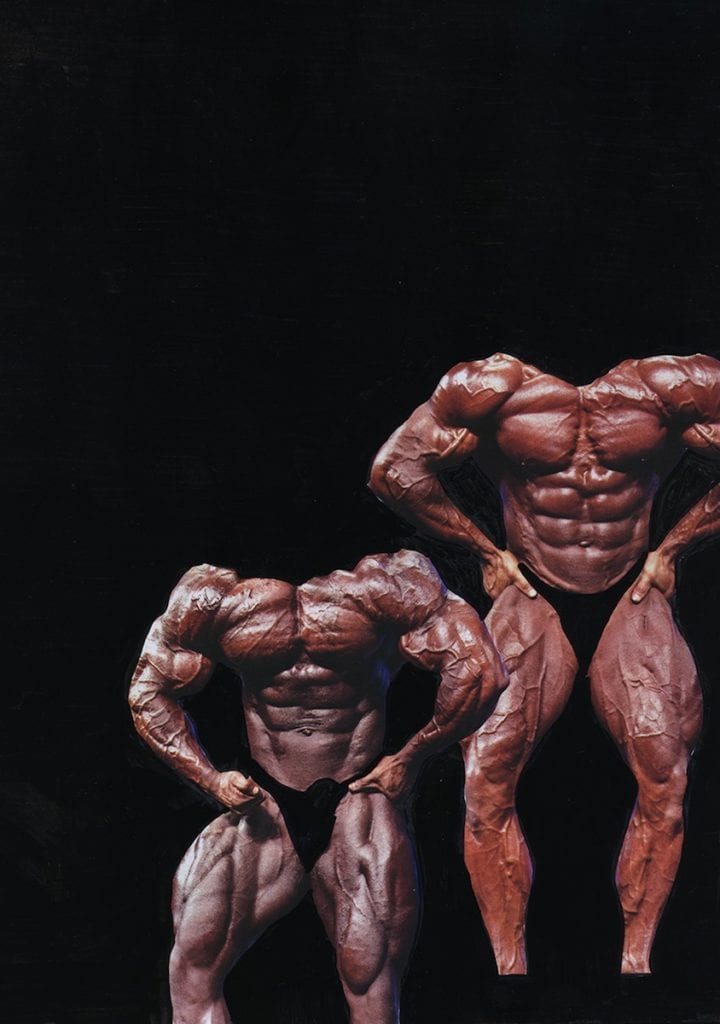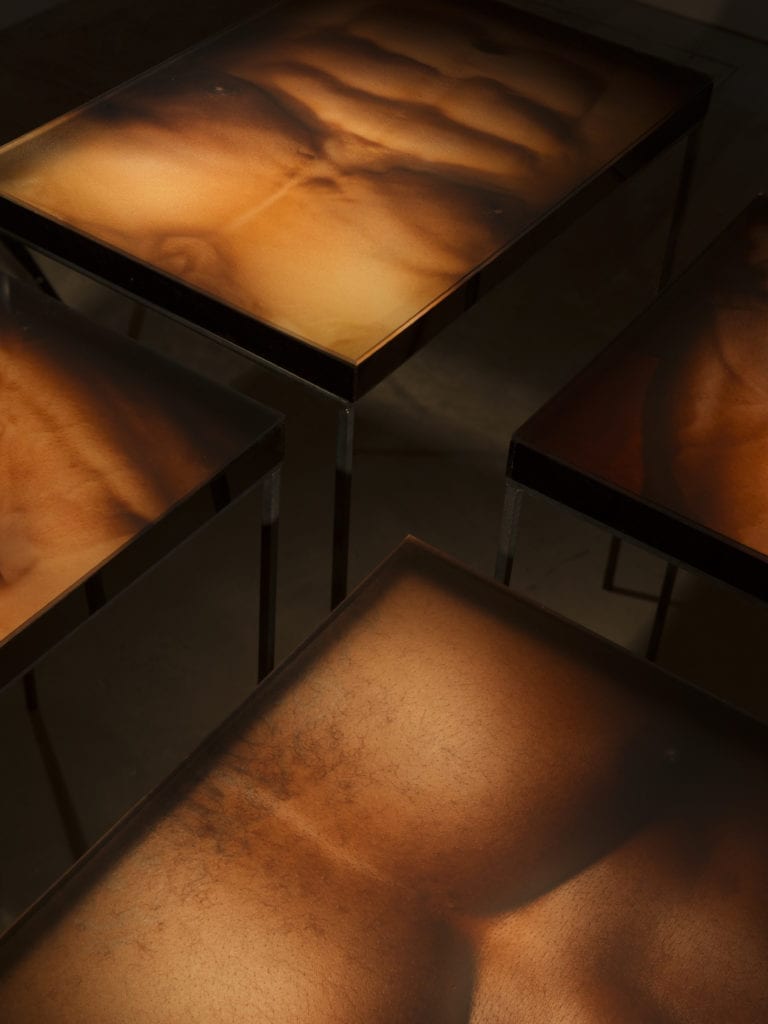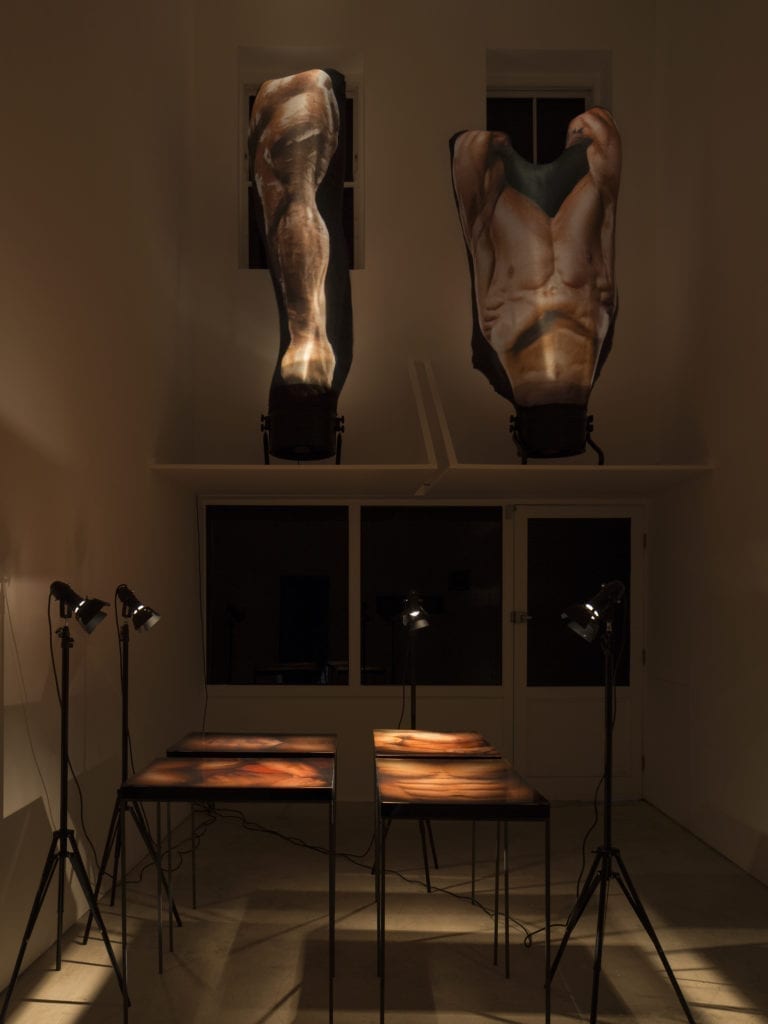In 1900, Eugen Sandow, the father of bodybuilding, was photographed by Étienne-Jules Marey. Marey, a French scientist, physiologist and pioneer of the photography, invented chronophotography: a method of analysing movement through rapidly photographed images (think of Eadweard Muybridge’s galloping horse suspended in mid-air). With his sculpted, muscular physique, Sandow was the perfect model for Marey to study human motion. “Through my research, I discovered this link between bodybuilding and photography,” says artist Alix Marie, speaking ahead of the opening of her London solo exhibition. Shredded, which comprises photography and multidimensional works, draws on the aesthetics of bodybuilding to investigate conceptions of body and gender.
This connection is just one of the many parallels between bodybuilding and Marie’s own practice, which cemented her interest in the subject. The artist specialises in blending photography, sculpture and installation to create work that interrogates notions of gender and the body. Originally studying Fine Art at Central St Martins College in London, with a particular focus on sculpture, she went on to complete an MA in Fine Art Photography at the Royal College of Art, London. “I kept photography and sculpture separate until I found a way to combine them,” she explains. “The practice of photography can be so clinical; it did not fit me as a messy sculptor. But that was kind of my obsession – to work out how to give the medium a body.”

Marie began to conceptualise photography as skin, enveloping the sculptural body beneath; an analogy that extends to bodybuilding. “Bodybuilders think of themselves as sculptures and sculptors,” explains Marie, “… and the skin is the costume they wear.” With bodybuilding, the onus is on aesthetics. The activity is distinct from strong-man contests, or weight-lifting, where strength is paramount. “What interested me in male bodybuilding, in particular, was the collapse of gender,” says Marie. “At first glance, it appears to be this performance of extreme virility, but actually these men are half naked on stage wearing golden underwear. So, visually, it is linked to the stereotype of the pin-up or the striptease, which are feminine cliches.”
One of the exhibited works It’s like somebody blowing air into your muscle, 2019, which comprises wind blower fans that inflate printed fabrics depicting male bodybuilders, was inspired by a quote from Arnold Schwarzenegger from the 1977 film Pumping Iron. For Marie, it encapsulates bodybuilders’ performance of virility. “Schwarzenegger says: ‘The greatest feeling you can get in a gym or the most satisfying feeling you can get in the gym, is the pump … I’m like, getting the feeling of coming in the gym. I’m getting the feeling of coming at home. I’m getting the feeling of coming backstage when I pump up, when I pose in front of 5000 people. I get the same feeling. So I’m coming day and night. I mean it’s terrific, right?'” she recounts. “It was just perfect as this performance of male virility”.

The idea for Olympians, 2019 – the second series, which will also be published as a book by Morel Books – evolved from Marie leafing through a Swedish porn magazine given to her by a friend. The publication was sold in Japan in the 1970s: “There was this huge censorship so they would black out all the genitals with a marker pen.” Marie applied the technique to editing bodybuilding magazines. “I wanted to see how it would look,” she says, “but, I ended up doing the opposite. Instead of erasing the body, I got rid of the rest.” Over the course of a year, she obsessively carved out the bulging, veiny exteriors of bodybuilders’ physiques in a manner akin to sculpting. “I am now at 150,” she says. “They take ages because it is not just one layer of a marker pen, it is about six.” The repetition also echoes the cyclical nature of bodybuilders’ regimes: “There are periods of time when they diet and get really skinny; there are periods of time when they eat so much. There are periods of time when, before a show, they stop drinking water to enhance their muscle definition.”
The vigorous regimes to which bodybuilders adhere are also alluded to in the third piece in the show – The more he starts to bring that water out the better he has a tendency to appear, 2019. The work comprises printed images of muscular torsos affixed to the lids of Perspex boxes filled with water. These are displayed atop metal stands and each is illuminated by a spotlight. “I call them the sweat boxes,” says Marie. The heat of the lights makes the water evaporate, coating the surface of each print in a layer resembling sweat. The work also references the practice of analogue photography; the process of developing images in chemical baths.

The distinctive sounds of a gym environment permeate the gallery space, which is bathed in dimmed light; the result is immersive. Through a multi-dimensional experience, Marie undoes the cliches associated with bodybuilding and encourages us to consider the stereotypes that shape our understanding of the body more broadly. “My work is successful when it provokes a bodily or visceral experience in someone,” she says. “I am used to a bit of a heated reaction. If people are made a little more aware of their own body, then I have done my job.”
alixmarie.com
Shredded opens 10 May 2019 and will be on show at Roman Road gallery in London until 02 June 2019.

